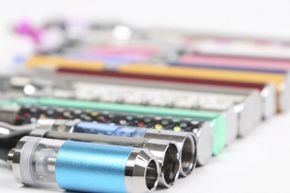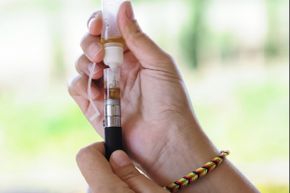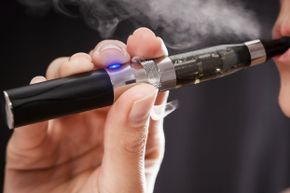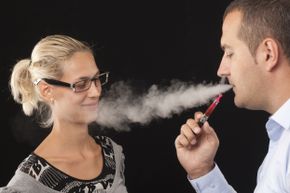Despite our growing knowledge that smoking tobacco is bad for us more than 40 million Americans are cigarette smokers. Smoking cigarettes is known to cause damage to every organ in your body, and smoking-related illnesses are responsible for one out of every five deaths in the U.S. [source: CDC]. But nearly 70 percent of smokers report they want to quit, and a little more than 42 percent say they've tried to quit during the past year [source: CDC]. In 2009 there was a 10 percent decrease in cigarette sales in the U.S., and while that directly followed an increase in the federal cigarette tax, it's not only price that's changing the habits of American smokers. Electronic cigarettes (known also as e-cigarettes) have also contributed. Global sales of smokeless tobacco products, including smokeless inhalers, has grown to nearly $3 billion -- and continues to grow. In an attempt to quit the tobacco habit as many as one-fifth of smokers have tried e-cigarettes [source: Ross].
E-cigarettes were first developed in China and were introduced to the U.S. market in 2007. Many are similar enough in appearance to be mistaken for regular tobacco cigarettes. But one look inside and you'll see the main difference: This is a tobacco-free product. E-cigs are actually vaporizers; instead of burning tobacco, the mechanism heats up a liquid. The liquid turns into vapor, which is then inhaled, or "vaped." While some argue that vapor offers health advantages over traditional cigarette smoke, regulatory agencies and some health experts aren't so sure that's true. Before you consider taking up the e-cigarette habit, read on to get the facts.
Advertisement










